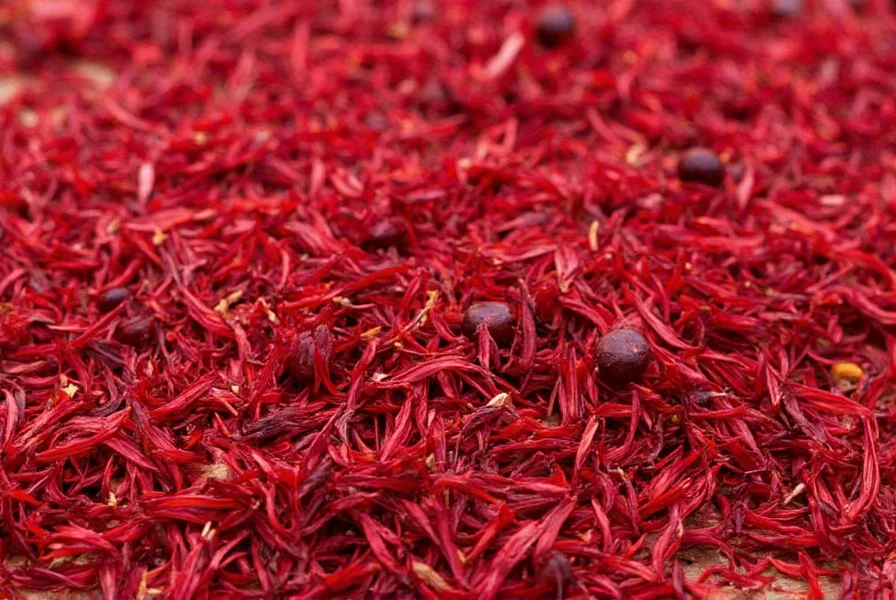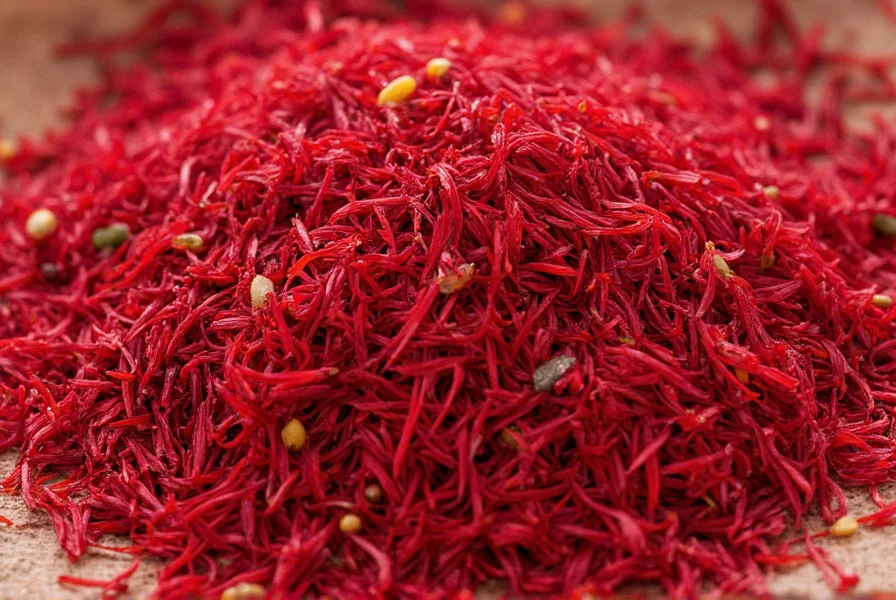Saffron, the world's most expensive spice by weight, has captivated civilizations for millennia with its distinctive aroma, vibrant color, and unique flavor profile. This golden treasure doesn't grow on trees or bushes but comes from the delicate stigmas of the Crocus sativus flower, a species of crocus that blooms for just one week each autumn. The harvesting process remains remarkably labor-intensive, requiring skilled workers to carefully pluck the three crimson stigmas from each purple flower before dawn, when the blossoms are still closed to preserve their precious compounds.
The Botanical Origin of Saffron
Crocus sativus, the saffron crocus, is a sterile triploid that cannot reproduce sexually and must be propagated through corms (bulb-like structures). This genetic characteristic means all saffron crocus plants are essentially clones of the original domesticated plant. The spice itself consists of the dried red stigmas—the female reproductive parts—of the flower. Each flower produces only three stigmas, which must be hand-picked and carefully dried to preserve their chemical compounds, primarily crocin (responsible for color), picrocrocin (for taste), and safranal (for aroma).

Historical Journey of Saffron Cultivation
Archaeological evidence suggests saffron cultivation began over 3,500 years ago, with early use documented in Bronze Age paintings on the Aegean island of Santorini. Ancient civilizations quickly recognized its value—not just as a spice but also as a dye, medicine, and ritual offering. The spice spread along ancient trade routes from its likely origin in Southwest Asia to Mediterranean regions, where it became integral to Greek, Roman, and Egyptian cultures. Historical records show saffron was used in everything from perfuming public spaces to treating depression in ancient Rome.
Modern Saffron Production Map
Today, saffron cultivation remains concentrated in a narrow band across the Mediterranean and South Asia where specific climatic conditions support Crocus sativus. The following table shows the current global production landscape:
| Country | Annual Production (kg) | Global Market Share | Notable Regions |
|---|---|---|---|
| Iran | 400,000 | 90-93% | Khorasan Province |
| Spain | 10,000 | 3-4% | La Mancha region |
| India | 8,000 | 2% | Kashmir Valley |
| Greece | 5,000 | 1% | Kozani region |
| Others | 5,000 | 1% | Morocco, Italy, Afghanistan |
Iran: The Undisputed Saffron Leader
Iran dominates global saffron production, with the northeastern province of Khorasan serving as the epicenter. The region's unique combination of cold winters, hot dry summers, and calcareous soils creates ideal growing conditions. Iranian saffron, particularly the premium Sargol grade (consisting only of the red stigma tips), is renowned for its exceptional coloring strength and aroma. The country's production advantage stems from centuries of cultivation knowledge, favorable climate, and lower labor costs compared to European producers.
Spain's Premium Saffron Tradition
While Spain produces significantly less saffron than Iran, its La Mancha region produces some of the world's most expensive and sought-after saffron. Spanish saffron benefits from European Union Protected Designation of Origin status, ensuring quality standards. The harvesting process in Spain remains entirely manual, with workers often using magnifying glasses to ensure only the highest quality red stigmas are collected. Spanish saffron typically commands higher prices due to stricter quality controls and lower production volumes.
Kashmir: India's Saffron Valley
The Kashmir Valley in northern India produces saffron with distinctive characteristics—deep red threads with exceptional aroma. Kashmiri saffron, known locally as Kong Posh or Mongra, has been cultivated for over 2,000 years. The high altitude (1,600-1,800 meters above sea level), cool climate, and specific soil composition contribute to its unique properties. Kashmiri saffron holds a Geographical Indication tag, recognizing its regional authenticity. However, production has declined in recent decades due to climate change and political instability.
Why Saffron Grows Only in Specific Regions
Saffron cultivation requires very specific conditions that limit its production to certain geographical areas:
- Climate requirements: Needs hot, dry summers followed by wet springs and autumns with moderate temperatures (15-25°C during flowering)
- Soil conditions: Prefers well-drained, calcareous (calcium-rich) soils with neutral to alkaline pH
- Water needs: Requires irrigation but cannot tolerate waterlogged conditions
- Altitude factors: Grows best between 200-2,000 meters above sea level
- Harvest timing: Must be picked at dawn when flowers are closed to protect delicate stigmas
These precise requirements explain why attempts to cultivate saffron outside traditional regions often fail or produce inferior quality. The labor-intensive harvesting process—which requires approximately 40 hours of work per ounce of dried saffron—further limits where commercial production makes economic sense.
Quality Differences by Origin
Saffron quality varies significantly by region due to differences in climate, soil, and processing methods. The ISO 3632 standard classifies saffron into four quality categories based on crocin (coloring strength), picrocrocin (bitterness), and safranal (aroma) content:
| Quality Grade | Crocin (Coloring Strength) | Picrocrocin (Bitterness) | Safranal (Aroma) | Typical Origin |
|---|---|---|---|---|
| Category I | ≥190 | ≥80 | 20-50 | Iran, Kashmir |
| Category II | 150-189 | 60-79 | 20-50 | Spain, Greece |
| Category III | 110-149 | 40-59 | 20-50 | Morocco, Italy |
| Category IV | <110 | <40 | 20-50 | Non-traditional regions |
The highest quality saffron (Category I) typically comes from Iran's Khorasan province and Kashmir's Pampore region, where optimal growing conditions produce threads with superior coloring strength. Spanish saffron often scores highly for aroma, while Greek saffron frequently demonstrates balanced properties across all three metrics.
The Future of Saffron Cultivation
Climate change poses significant challenges to traditional saffron-growing regions, with rising temperatures and changing precipitation patterns affecting flowering cycles. Researchers are exploring new cultivation techniques, including controlled environment agriculture and drought-resistant varieties. Some non-traditional regions like New Zealand and the United States (particularly California) are experimenting with saffron production, though yields remain small. Despite these innovations, the labor-intensive nature of saffron harvesting ensures it will likely remain the world's most expensive spice for the foreseeable future.
Frequently Asked Questions
Why is Iran the largest producer of saffron?
Iran produces over 90% of the world's saffron due to ideal growing conditions in Khorasan province, generations of cultivation expertise, and lower labor costs compared to European producers. The region's specific climate—hot dry summers followed by cold winters—and calcareous soils create perfect conditions for high-quality saffron production. Iran's dominance also stems from historical cultivation traditions dating back thousands of years and government support for saffron farming as a key agricultural export.
What makes Kashmiri saffron special compared to other varieties?
Kashmiri saffron, grown in India's Kashmir Valley at high altitudes (1,600-1,800 meters), is prized for its deep red color, strong aroma, and high crocin content. The unique combination of cool climate, specific soil composition, and traditional harvesting methods results in saffron with exceptional coloring strength. Kashmiri saffron holds a Geographical Indication tag and is often classified as Category I under ISO 3632 standards. Its distinctive characteristics make it particularly valuable for both culinary and medicinal applications.
How does the origin of saffron affect its quality and price?
Saffron quality varies significantly by origin due to differences in climate, soil, and processing methods. Iranian saffron typically offers the highest coloring strength (crocin content), Spanish saffron often has superior aroma (safranal), while Kashmiri saffron provides a balance of color and fragrance. Prices reflect these quality differences, with Spanish La Mancha saffron often commanding premium prices despite lower production volumes due to strict quality controls. The ISO 3632 standard categorizes saffron into four quality grades based on chemical composition, with Category I (highest quality) primarily coming from Iran and Kashmir.
Can saffron be grown outside traditional regions like Iran and Spain?
While saffron can be grown outside traditional regions, commercial success is limited by specific climate requirements. Regions like New Zealand, the United States (California), and parts of Europe have experimented with saffron cultivation, but yields remain small compared to traditional producers. Successful cultivation requires hot dry summers, cold winters, well-drained calcareous soils, and the labor capacity for manual harvesting. Climate change is also shifting traditional growing zones, with some traditional regions experiencing reduced yields while new areas become potentially suitable for saffron production.











 浙公网安备
33010002000092号
浙公网安备
33010002000092号 浙B2-20120091-4
浙B2-20120091-4